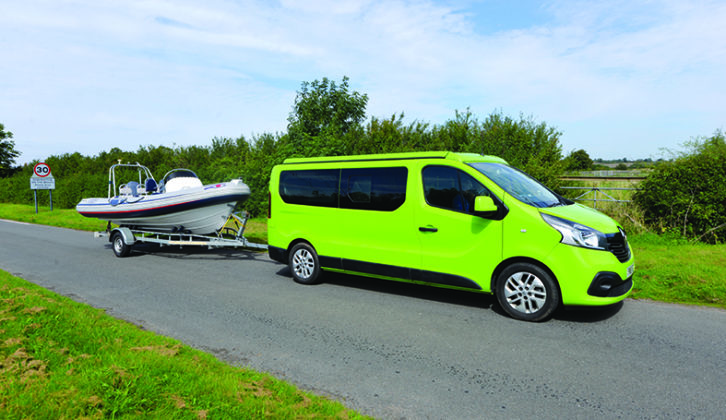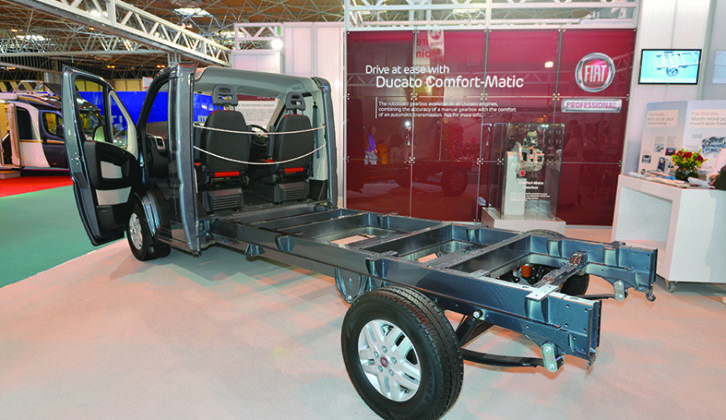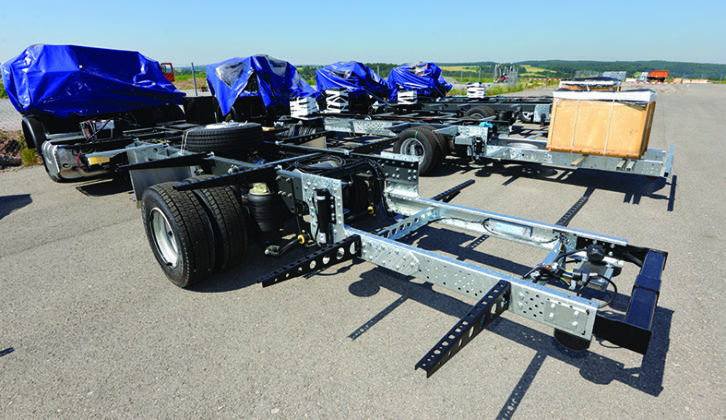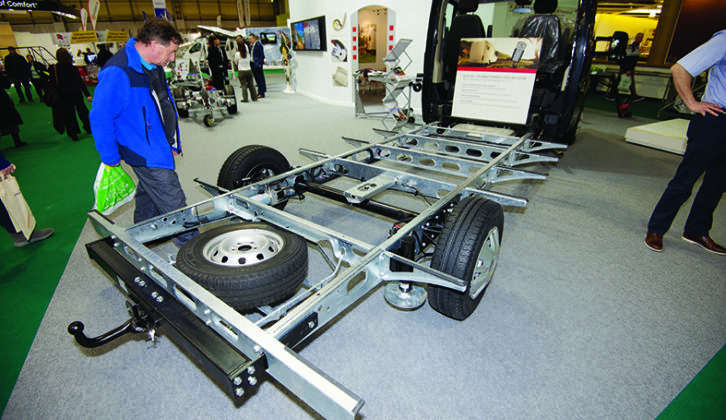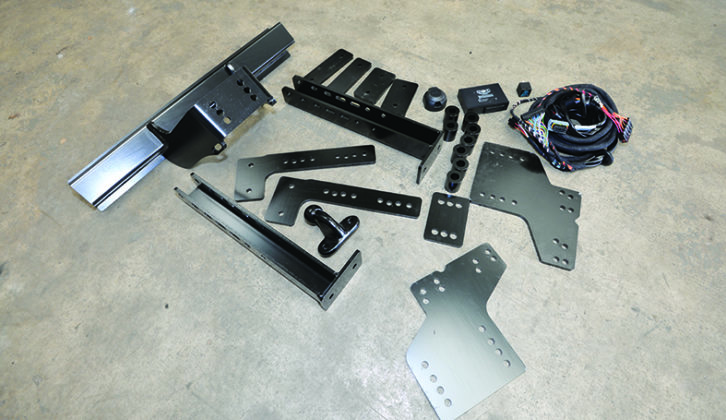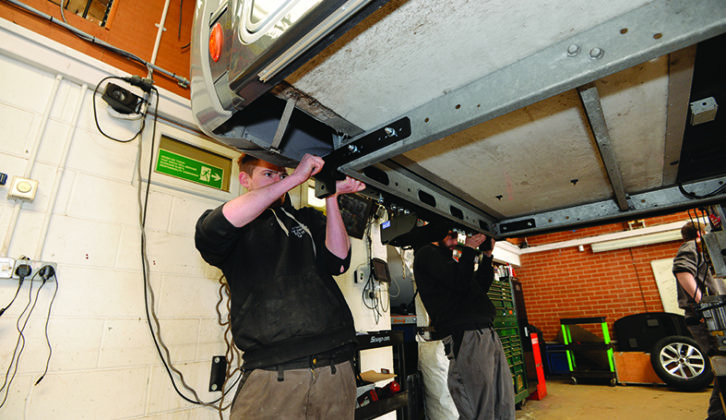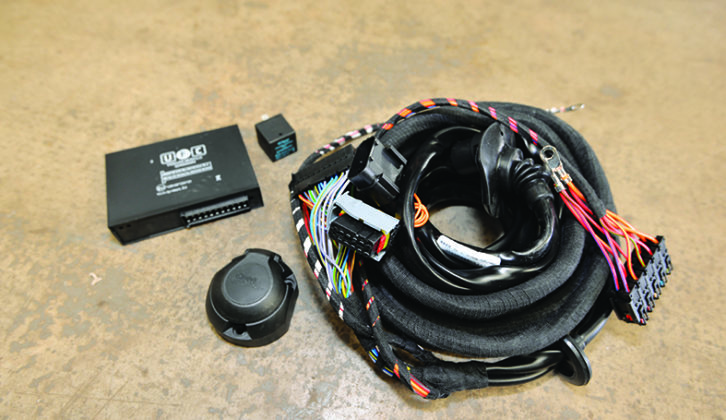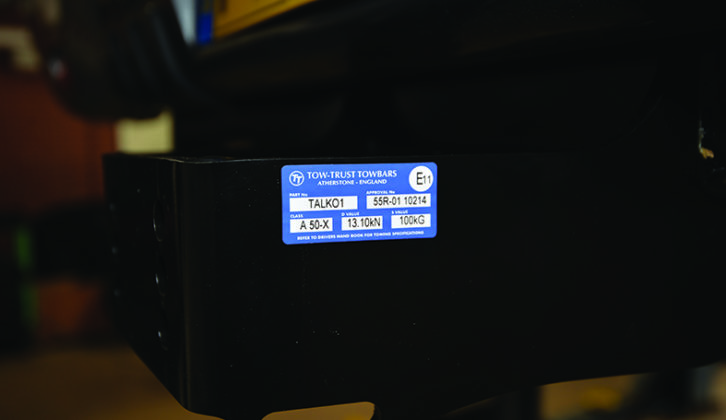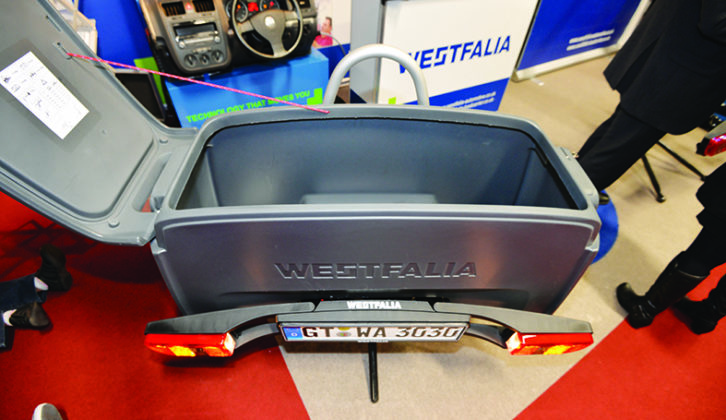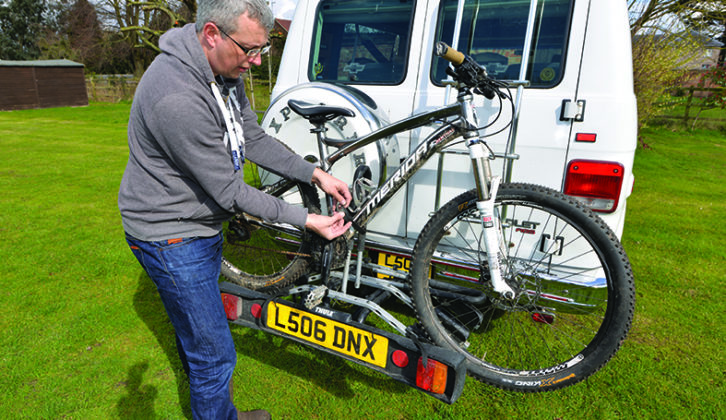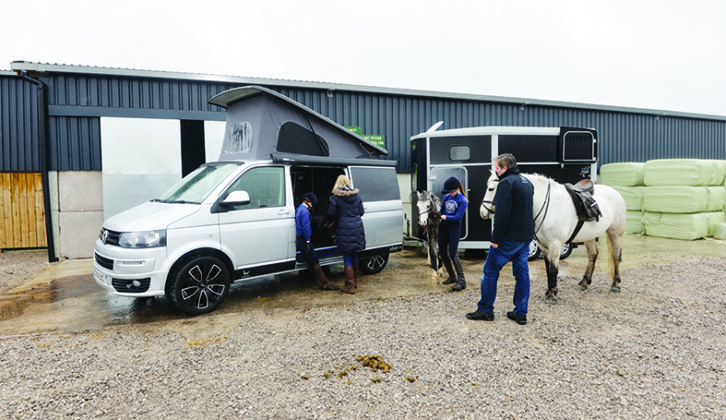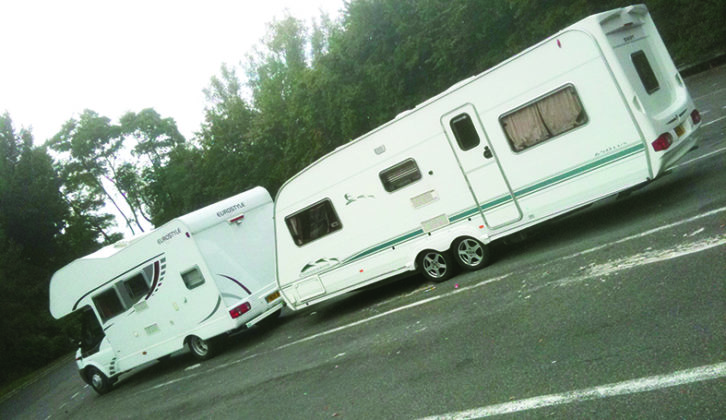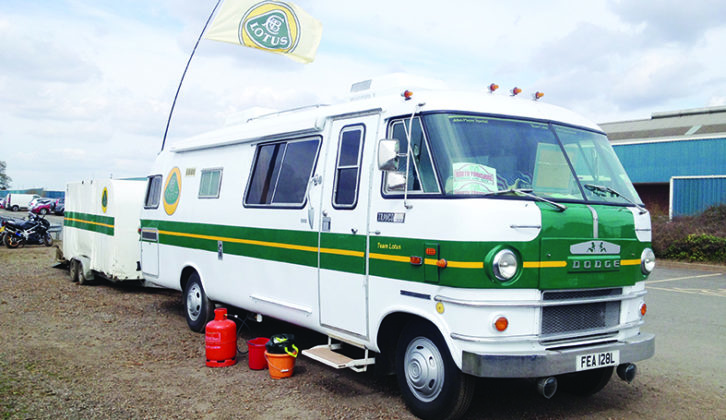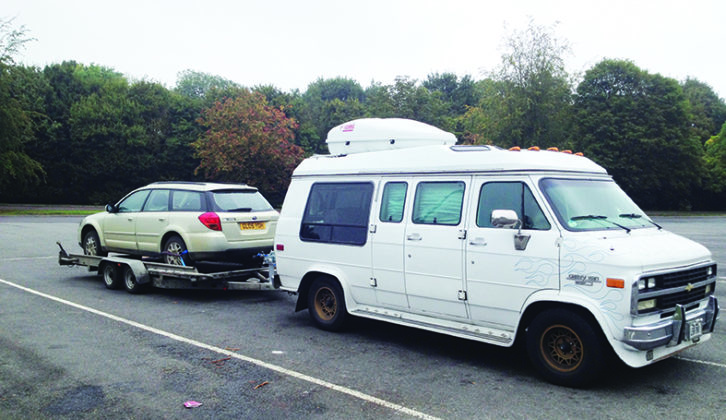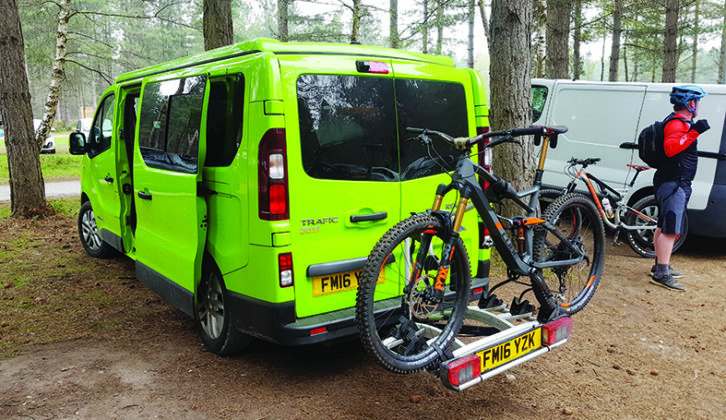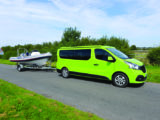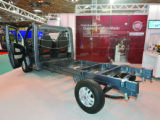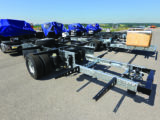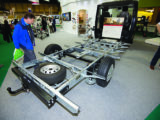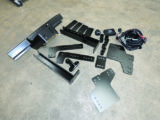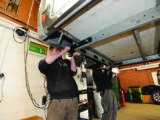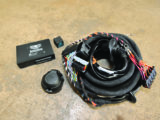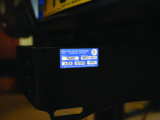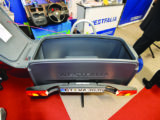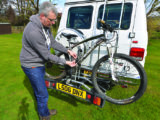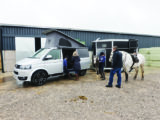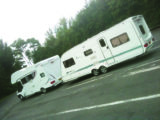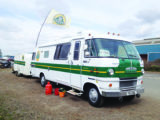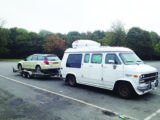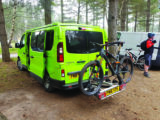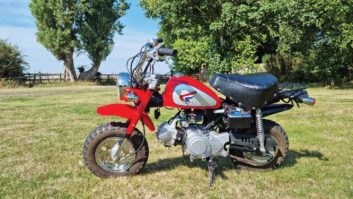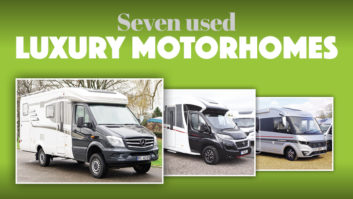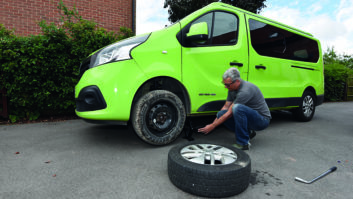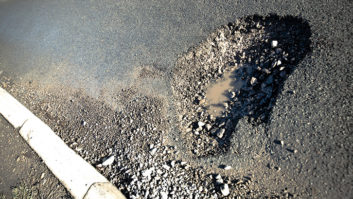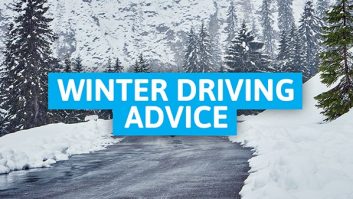Now if you’re thinking, “I don’t want to tow anything, I don’t need a towbar!”, hang on a second. A towbar isn’t just about towing. It’s much more than that – a universal attachment point that allows you to carry anything from bike racks to storage boxes. As a bonus, you can even tow stuff with one! Here’s our towing tips for motorhomes.
Towing has all sorts of benefits, from decanting excess weight to a small trailer, to carrying those inconveniently bulky items you’d rather not stash inside (kayaks, I’m looking at you).
If you own a larger motorhome, you might even want to tow a couple of scooters or a car. This can make it easier to tour the area around your campsite and shop for supplies, without having to find a space for your 8m-long A-class.
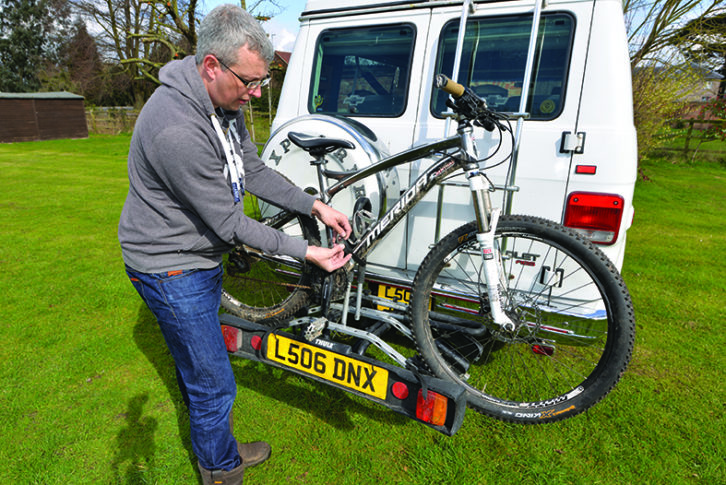
In addition the frame that the towbar bolts to can beef up the rear of your motorhome and protect the delicate rear panel from damage. So the humble towbar can add versatility and extra safety to your motorhome, too.
Know your weight
No, not those lockdown pounds – the weight of your motorhome! While your V5C and the chassis plate on the ‘van itself will indicate the MTPLM and individual axle weights of your motorhome, you need to know your actual weight. MTPLM minus the actual weight is your payload.
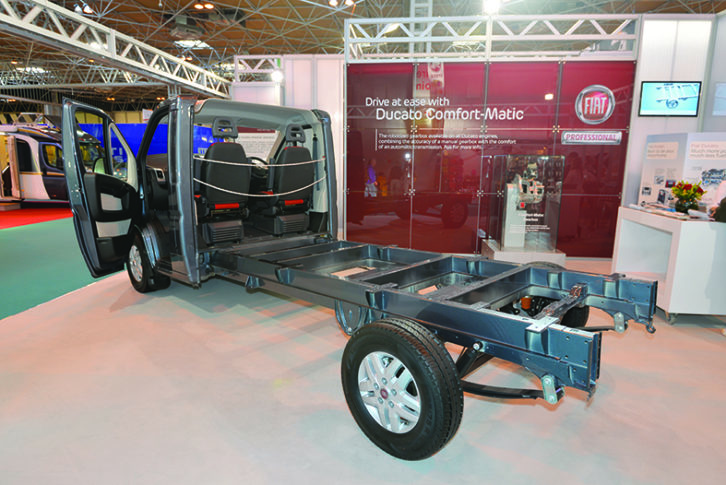
There is only one way to do this: visit a public weigh bridge (or farmer’s yard/scrapyard) and have your front and rear axle weights measured. This is essential, because the touring kit you carry is individual to each motorcaravanner and there’;s no way to predict it – brochure weights don’t help here. Bear in mind that this figure needs to include everyone inside the vehicle, so if you carry a family of four, you have to allow for this.
In particular, you need plenty of spare payload – at least 200kg – on your rear axle before you can even think of adding a towbar. This is especially critical if your ‘van has a large rear overhang, as this has a cantilever effect on the rear axle.
In other words, the weight acting on the rear axle will be heavier than the load on the towbar, because it is magnified by distance. Links to online calculators that will help you work this out are listed at the end of this article.
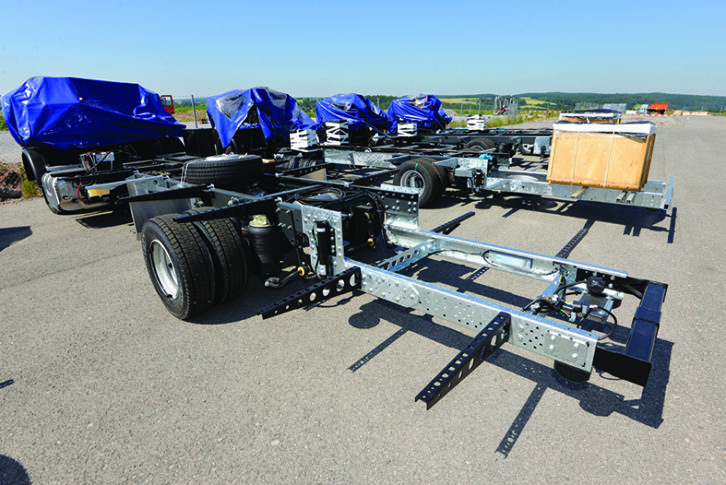
Not all motorhomes – particularly coachbujilts with a long rear overhang – have a chassis that extends to the rear of the vehicle. To support a towbar, such models will need to have stout chassis extensions added – the weight of these is multiplied by the cantilever effect. If your ‘van has a modest payload and a large rear overhang, it might not be possible to fit a towbar.
Equally, the design of some motorhomes precludes adding a towbar – for example, the placement of water or LPG tanks can block the mounting points for a towbar, so not all vehicles can be fitted with one.
So before you invest any money in accessories for your towbar, the first step is to speak to a motorhome towbar specialist, to find out what the possibilities are for your particular vehicle.
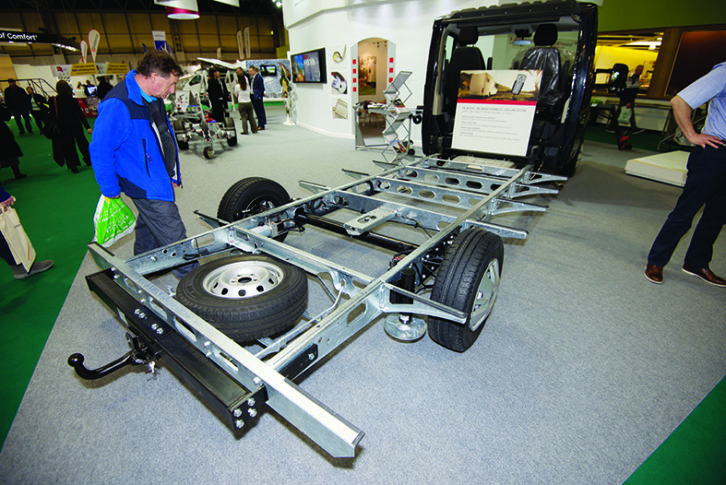
Types of towbar
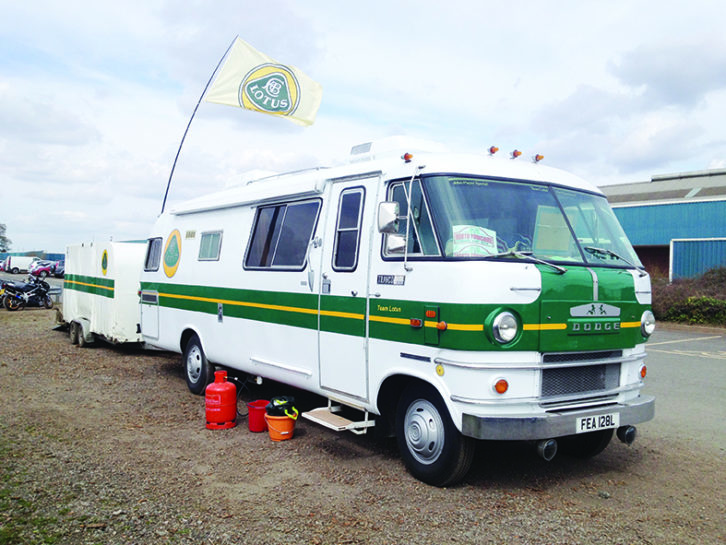
So what sort of towbar does your vehicle need? If it was registered before April 2012 (that is, up to a ’61’ plate), you can fit a non-type-approved towbar (or a type-approved model).
If the vehicle was registered after April 2012 (that is, ’12’-plate onwards), you have to fit a type-approved towbar if you are planning to tow anything. If you only want to add a bike or scooter rack, you don’t have to fit an approved towbar, but it is wise to do so just in case future owners (or you) do later decide to tow.
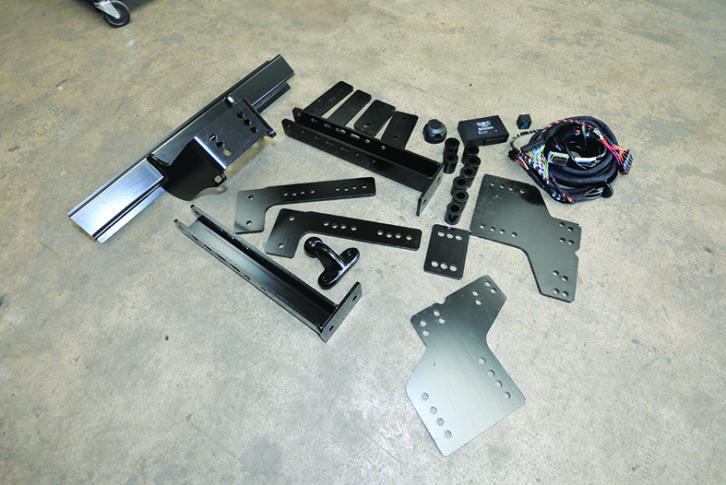
Type-approved towbars will have a data plate attached to them detailing the maximum weight they can pull and the maximum nose weight (the vertical weight pushing down on the towball).
It’s worth noting that the ‘van manufacturer might have a different maximum towing weight – whichever figure is the lowest is the maximum tow weight for your combination of towbar and motorhome. So if the towbar is rated for 2500kg but your motorhome manufacturer states 2000kg, then 2000kg is the maximum.
With this hurdle overcome, there are several styles of towball to choose from. Swan-necks taper up from underneath the towbar and are useful on vehicles with lower rear valances. Some swan-necks are detachable for an unobtrusive look when not in use – and to save your shins!
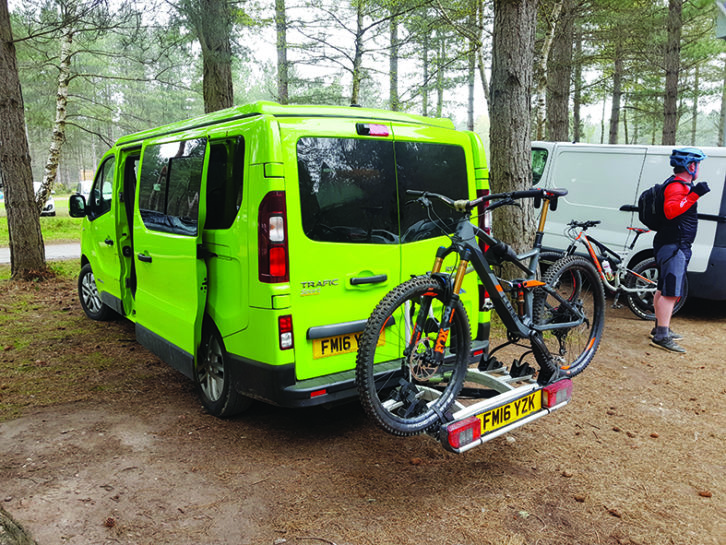
The most common type of towball is the two-bolt flange-mounted model, which is also the most adaptable – it can be raised or lowered on mountain plates, spaced rearwards to clear bodywork, and have all manner of dedicated racks sandwiched between the towbar and towball bolts. This allows you to fit a bike rack and tow a trailer (up to the nose weight limits).
Bike and storage racks can be fitted to any type of towball – it is a common universal fitting.
As well as the fitting frame, many motorhome towbar specialists offer extended rear bumper bars. If you have sufficient payload, these are well worth having, especially if you have a coachbuilt or A-class, as they help to protect the rear valance from damage and provide extra reinforcement if anyone runs into the back of you.
Towbar fitting
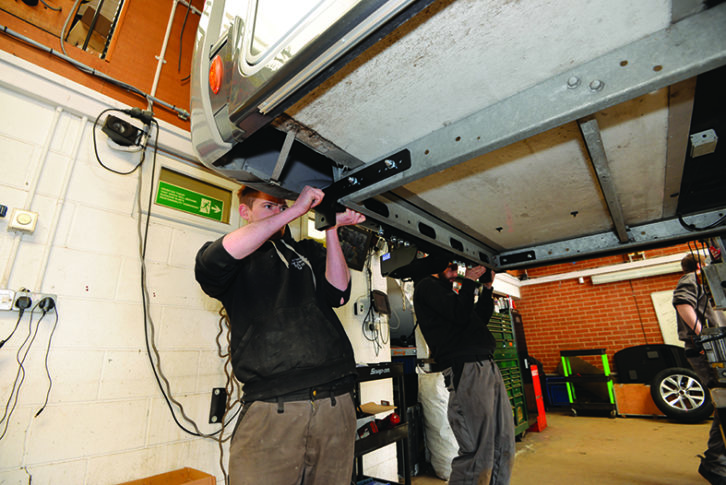
Bolting the towbar in place is generally pretty straightforward; the tricky bit is adding the supporting frame. In the case of a panel van conversion, it’s a simple bolt-on job, but with a coachbuilt, the supporting framework can be quite extensive and involved (in other words, heavy and complicated).
On earlier motorhomes, the wiring is fairly simple and just involves tapping into the lighting, braking and fog lamp circuits and adding a relay that buzzes to let you know the trailer/bike rack indicator bulbs are working.
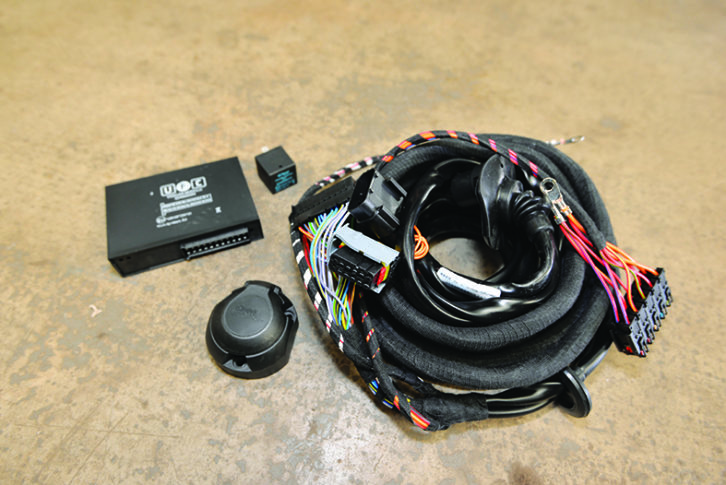
However, on modern vehicles with CAN Bus wiring, it’s a much more involved process – most towbar makers offer a dedicated wiring loom that will sync with the vehicle’s ECU. We’d always recommend having your towbar fitted by a specialist motorhome firm – it is no longer the simple bolt-on job it used to be. See the wiring loom photos if you need further convincing!
Licensed to tow
If you do want to use your towbar for towing, you’ll need to make sure you have the correct code on your driving licence – most people have category B, but this denotes different things, depending on when you passed your test.
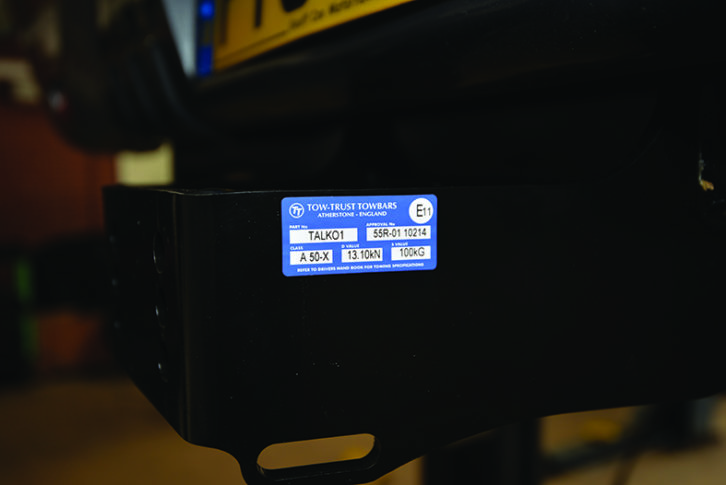
If you passed your driving test after 1 January 1997, you may be limited to driving a vehicle of up to 3500kg maximum, with a trailer of up to 750kg. You can tow a heavier trailer, but the combination of motorhome and trailer must be under 3500kg (for example, a 2500kg motorhome and a 900kg trailer).
If you passed your test before 1 January 1997, you should be able to tow a ‘van and trailer with a combined weight of up to 8250kg.
If you have category BE on your driving licence and passed your test before 19 January 2013, you can drive a vehicle with a maximum weight of up to 3500kg towing any weight of trailer. If you passed after 19 January 2013, you are restricted to a trailer under 3500kg in weight.
If your motorhome weighs 3500-7500kg, you need to have category C1 on your licence, which allows you to drive with a trailer of up to 750kg. The C1E category extends this to allow you to hitch up trailers of over 750kg, up to a combined weight (motorhome and trailer) of 12,000kg. You also need to check the codes next to this category on your licence – most include ‘107’, which limits the maximum combined weight to 8250kg.
All these licence categories are maximums – you still have to abide by the motorhome manufacturer’s maximum towing limit and the maximum loading of the trailer.
You can have training to add extra categories to your driving licence, but this can soon get costly. It’s also worth noting that category C1 comes with strings attached if you’re over 70 – you have to renew it every three years, but this can only be done by post and may have to include a medical. The DVLA can also issue restrictions, depending on your health status, which is why many older motorcaravanners opt for vehicles under 3500kg.
Trailer rules
If you just want to tow a box trailer behind your vehicle, the key thing is to note the weight of the trailer. If it’s under 750kg, it doesn’t need to have brakes fitted, but it does need to have a secondary coupling for safety.
If it’s over 750kg, a braking system is needed for the trailer. These typically work through a compressible hitch that activates cables or rods linked to hub brakes. When your motorhome brakes, the hitch mechanism compresses and applies the trailer brakes.
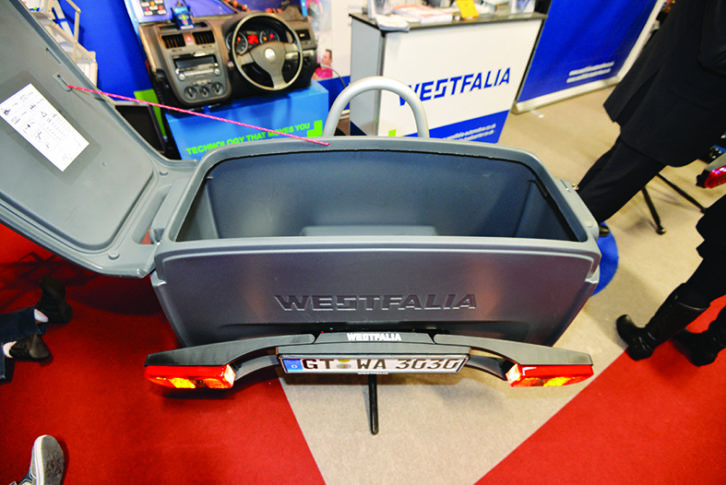
It’s important to point out that if the trailer has been fitted with brakes (for example, you’re using a converted caravan chassis), they must work, even if it is under 750kg. They must also have a breakaway cable, which automatically applies the trailer brakes in the event of a hitch failure.
Trailer brakes require regular maintenance to avoid seizing up (top tip: don’t apply the handbrake over winter lay-up – use wheel chocks instead), which is why many choose trailers under 750kg.
All trailers must display reflective triangles at each rear corner and have working tail-light, brake lights and numberplate lights, and, if fitted, a functioning foglight.
A-frames
A-frames are always a contentious issue. Many motorcaravanners swear by them, while others view them as a thing of the devil. The truth is somewhere in the middle!
The legality is often questioned, but in the UK, it is pretty clear. The Department for Transport states that any car attached to an A-frame “temporarily becomes a single unit” and “for the purposes of its construction, treated in GB legislation as a trailer.” As such, it has to comply with all relevant trailer laws, the most important of which is braking.
The key point is that the usual trailer 750kg weight limit for brakes isn’t relevant. All cars are fitted with brakes, so they are treated as a braked trailer when bolted to an A-frame and this overrides the weight limit. So even if your car weighs under 750kg, it must have working brakes when attached to an A-frame.
Braking systems adopted by A-frame makers vary from electronic systems that push on the brake pedal when they detect deceleration, to simple cable-actuated systems. The towed car will need modifying to have a braking system added and may need additional fixing points installed on the front bumper, to allow the A-frame to attach to it. Red warning triangles, working tail-lights and the van registration must be displayed on the rear of the towed vehicle – the easiest method is to attach a trailer board.
Not all types of car are suitable to be flat-towed (especially those with automatic or semi-automatic gearboxes and some modern vehicles that have automatic braking systems), so check with your car maker first. It’s also worth pointing out that a tow vehicle will be subject to similar wear to your motorhome. Whatever mileage your motorhome does, the tow car;’s tyres, brakes, wheel bearings and gearbox bearing will do the same.
In Europe the rules are less clear, and Brexit has muddied the waters. So first, check the rules operating in all of the European countries that you intend to travel through.
Germany and Spain only allow licensed recovery operators to recover vehicles on an A-frame and, although the towed car and A-frame are legally classed as a trailer in the UK and, in theory, should be covered under the Vienna Convention, in practice that might not be recognised by local police. The police will often fine first and leave you to contest the fine when you return home, with no guarantee of success either way,
So if you want to travel in Europe, do your homework on countries you plant to visit. Most A-frame manufacturers provide documentation, translated into several languages to try to cover you, but even then, there’s no guarantee that the police will be up to speed on A-frame legislation, and they might stop and fine you anyway.
Car transporter trailers
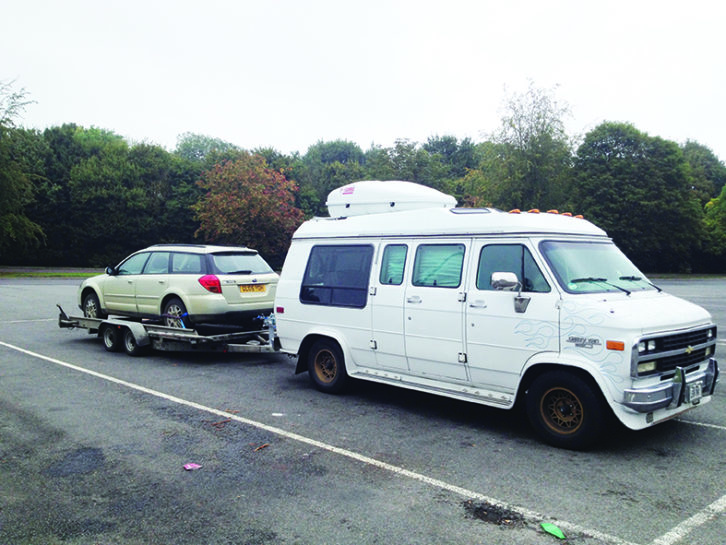
For towing a car, trailers have advantages. First, they’re fully legal in the UK and most European countries (but check first for the country you wish to travel in), and can be bought in all sorts of sizes and shapes to suit any vehicle.
The limit is the maximum towing weight set by the motorhome manufacturer – it’s usually between 1500kg and 2500kg for most makers. This is the combined weight of the trailer plus whatever vehicle is on it.
The trailer itself will also have a maximum axle weight, which is detailed on its data plate, that cannot be exceeded.
They’re also easier to reverse than A-frames and don’t cause extra wear to the tow car, because its wheels are static in transit, so the wheel bearings, gearbox layshaft and tyres are not subject to wear.
The downside is that trailers are bigger and heavier to manoeuvre, and can be bulky to store at home or on a pitch (check that campsites have room on your pitch when you book).
Equally, care needs to be taken when loading them, to ensure weight is as equally distributed as possible and avoid wagging on the motorway. Ideally, you want the heaviest part of the vehicle – usually the engine weight – between the trailer axle and hitch. So rear-engine vehicles are best loaded backwards, while front-engine vehicles can be driven on forwards.
Insurance in Europe
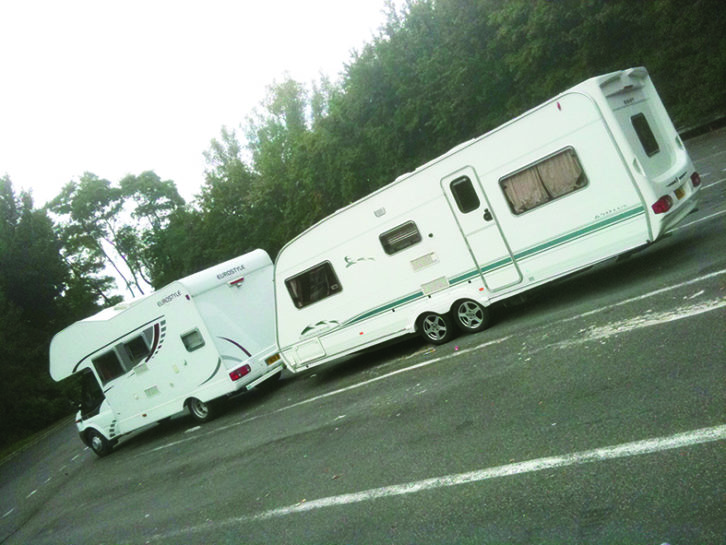
If you want to tow in Europe – either a trailer or an A-frame and towed car – you’ll need to have a green card for both the motorhome and the trailer and towed car – your motorhome insurer should be able to provide these.
So you will not only need to insure your trailer, you also have to carry physical proof of this cover (electronic copies will not be accepted) when you are driving in the EU. It’s always recommended that you keep your V5C logbook with you, too.
Useful links
Rear-axle load calculators
A-frame legality
Driving licence categories
Motorhome towbar specialists
If you liked this… READ THESE:
Best kit to pack for a motorhome on tour
If you’ve enjoyed reading this article, why not get the latest news, reviews and features delivered direct to your door or inbox every month. Take advantage of our brilliant Practical Motorhome magazine SUBSCRIBERS’ OFFER and SIGN UP TO OUR NEWSLETTER for regular weekly updates on all things motorhome related.
Future Publishing Limited, the publisher of practicalmotorhome.com, provides the information in this article in good faith and makes no representation as to its completeness or accuracy. Individuals carrying out the instructions do so at their own risk and must exercise their independent judgement in determining the appropriateness of the advice to their circumstances. Individuals should take appropriate safety precautions and be aware of the risk of electrocution when dealing with electrical products. To the fullest extent permitted by law, neither Future nor its employees or agents shall have any liability in connection with the use of this information. You should check that any van warranty will not be affected before proceeding with DIY projects.
Type-approved towbars will have a data plate attached to them detailing the maximum weight they can pull and the maximum nose weight
